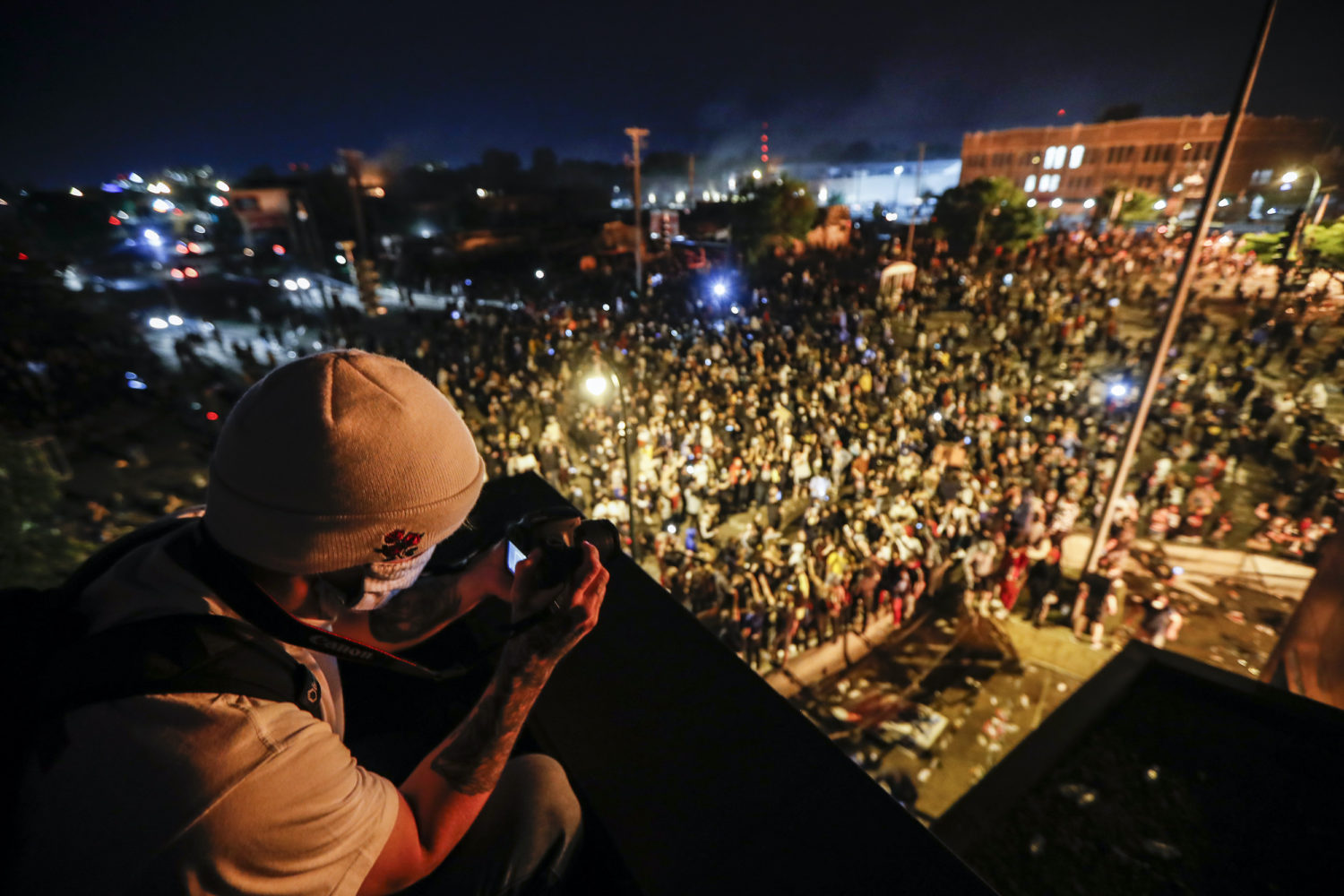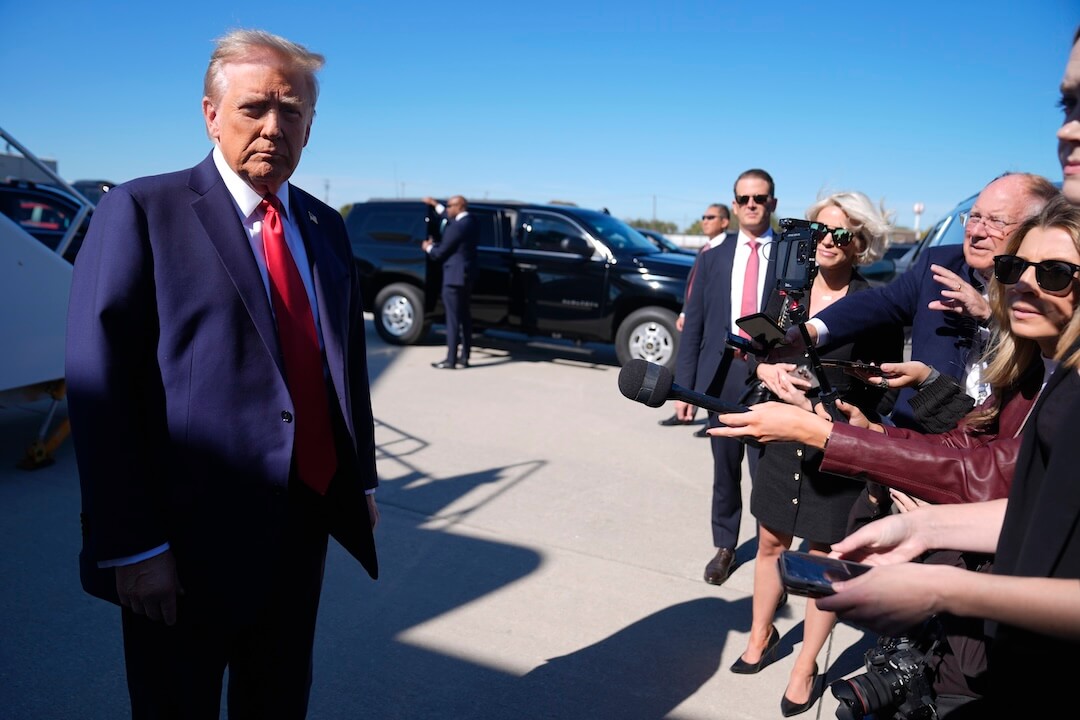It was an unsettled weekend in America as demonstrators nationwide protested police brutality and the death of George Floyd at the hands of Minneapolis police officers. Journalists covering the protests have been hit with tear gas and bean bag rounds and several have been arrested. Others have been attacked by demonstrators.
Journalists will find themselves in harm’s way as they continue to document this important story. Poynter has prepared a handout of these guidelines for you to circulate to staff. We are also linking to important legal advice for journalists at the bottom of this article.
Your goal should be to get close enough to observe the scene without endangering yourself or others or interfering with security or rescue operations.
- Your attitude is crucial. Show respect, follow police orders and don’t argue while tensions are high.
- Clearly identify yourself. Have credentials easily available. But think carefully about whether you display credentials openly when surrounded by demonstrators. Do not hang credentials on a lanyard around your neck. It can be used to strangle you in a scrum.
- Don’t draw attention to yourself. TV lights attract attention. The smaller the camera, the more you blend in with a crowd. However, police may mistake you for a protestor or demonstrator. Police watch hands, so make no sudden moves if they approach you. Keep your hands visible and open.
- Keep rolling. Document as much as you can, especially when tensions grow. Keep a “dud” memory card that you are not recording on in case somebody demands you hand over your video or images.
- Stay on the edge of crowds. Do not venture into the middle. While in crowds, move in short steps to avoid tripping.
- Have a constantly updated escape route in mind. In the fog of smoke or tear gas, look for curbs and sidewalks that can guide you away from the scene. When tensions are building, decide whether you will be physically closer to the protestors or the authorities. It will determine what threats you will have to be aware of.
- Physical fitness is an important consideration in covering situations that could suddenly turn violent. Journalists whose mobility is limited should weigh the risks in advance.
- Know the history of violent events in that community. What has happened in the past and how did it unfold? What might reignite old tensions?
- Working alone has the advantage of lowering your visibility but also leaves you with blind spots. Look out for other journalists.
- Know your gear. Do you have enough open card memory? How fresh are your cellular transmitter’s batteries? Do you know where the dead zones are for your LiveU/TVU? Top off your phone battery every chance you get.
- Practice “situational awareness.” Constantly scan your surroundings as crowds move. Monitor audio but keep an ear open for changes your microphone may not detect. Is someone moving up behind you?
- Consider whether you should hire security to be with you, especially while you are reporting live. What guidelines will you give to hired security if the situation turns violent?
- Carry a grab bag with a small first aid kit, water bottle, high-protein snacks, washcloth, eye protection, respirator mask, flashlight, portable phone battery charger, and a copy of your ID or press card. Ideally, the kit should fit tightly strapped to your body and everything should be expandable. Practice using respirators, goggles and gas masks beforehand.
- Obtain basic first aid skills. Tear gas usually burns for an hour but causes skin irritation for a few hours. Face the wind. Fresh air will help blow excess tear gas powder off of you and will prevent it from blowing back into your mouth or eyes. Rinse your eyes with cold water. Rinse your clothing and body with cold water. When you can shower, use cold water first, then warm water.
- Consider wearing a light body-armor vest and protective headgear, depending on the threat level. But do not use these as props to exaggerate the threat. Protective gear may give you undue confidence to take avoidable risks.
- Stay in constant contact with your newsroom. Freelancers should have someone who knows where you are and where you are going. Newsrooms should have a point person who is keeping close track of where journalists are. Consider using GPS location apps that map people’s movements.
- Don’t touch tear gas, flash-bang or smoke canisters. They can be hot, could explode or might have harmful residue on them. If you pick up a canister, authorities may assume you are a demonstrator.
- Do not signal police plans or movements on-air or online in ways that might compromise their safety. Demonstrators sometimes monitor social media posts to find escape routes.
- Be especially careful in how you report what you experience. Don’t repeat rumors. Verify and attribute everything. When you cannot verify information, ask how the source knows what he/she knows. Be skeptical of crowd estimates. Event organizers and demonstrators have agendas. So do authorities. When police use force, they may have a reason to claim crowds are large and out of control.
- Don’t trust eyewitnesses as the “truth.” Did they see what they think they saw? Are they telling you everything? Does the witness have an agenda? Was it dark? How close were they to what they saw or heard? Witnesses often are wrong. Compare versions of the event to ask why different people saw it differently.
- Limits subjective adjectives and stick to factual descriptions. Avoid words like “big” and “huge,” for example, and describe crowd sizes factually e.g. “they fill a two-block area” or “I can see crowds that stretch for five blocks.” Be careful not to use loaded language such as “peaceful” and “threatening” except in quotes or soundbites.
- Be specific when describing neighborhoods. Don’t rely on vague descriptors like “East Side” or describe a location as a “high-crime area.” If you describe racial or ethnic identities, explain why those descriptors are important. Do not assign motives to anyone; you cannot know what people think or feel, only what they say and do.
- Safety first, story second. When you take undue risks, you endanger those who might have to rescue you. Your actions also reflect on your fellow journalists.
National Press Photographers Association legal counsel Mickey Osterreicher provides legal advice on what to do if you are arrested. NPPA’s safety committee also wrote a guide for “situational awareness.”
RTDNA has its own thoughtful guidelines for covering civil unrest, some of which I have adapted.
The Committee to Protect Journalists produced an extensive guide for covering dangerous situations.
Please download and share these guidelines with colleagues.
 Al Tompkins is senior faculty at Poynter. He can be reached at atompkins@poynter.org or on Twitter, @atompkins.
Al Tompkins is senior faculty at Poynter. He can be reached at atompkins@poynter.org or on Twitter, @atompkins.







